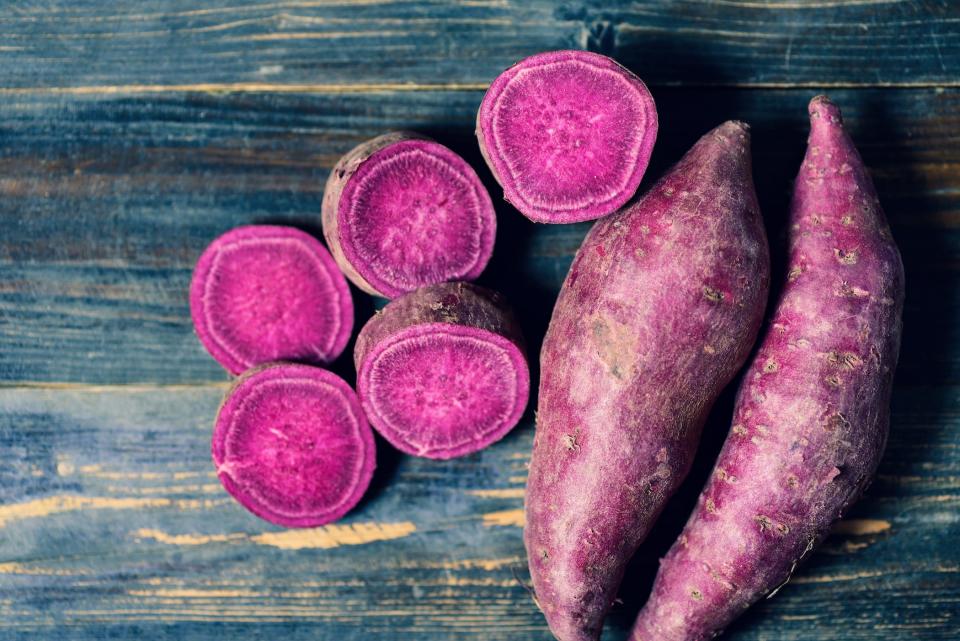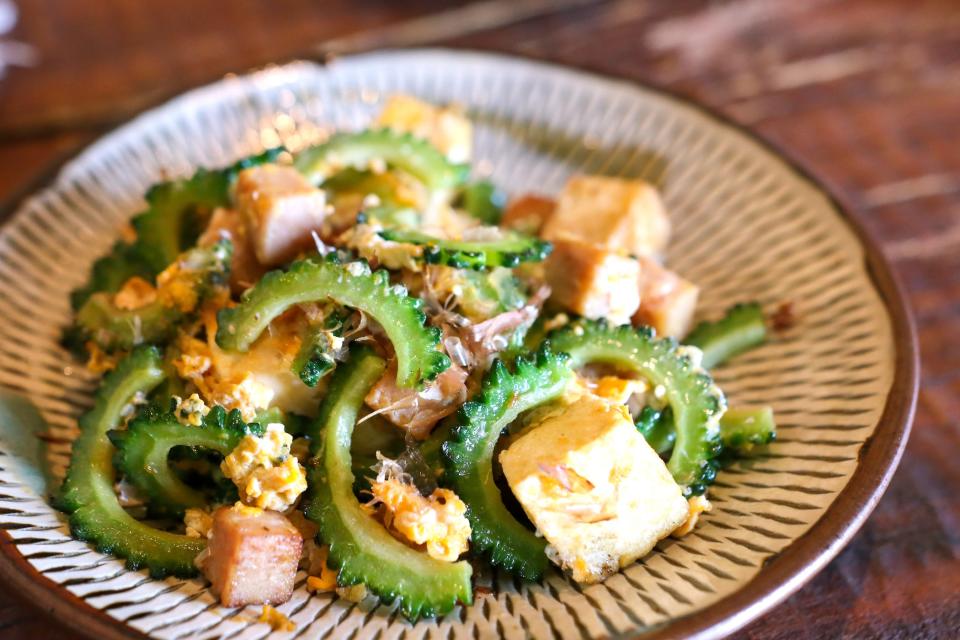A cook from Okinawa, Japan — where many live to be over the age of 100 — explains the healing powers of 7 traditional foods
Okinawa, Japan, has an unusually high rate of people living past 100.
One key to Okinawa's Blue Zone status is the region's traditional cuisine.
Okinawans fill up on foods rich in antioxidants, fiber, and complex carbs, such as purple beni imo.
The warm, tropical islands of Okinawa, Japan, are home to a stunning number of healthy, happy, and spry centenarians who are living past the age of 100.
The author Dan Buettner has spent more than two decades investigating what makes Okinawans so long-lived, trying to uncover their secrets and learn from them.
He is convinced that one major factor in the longevity of Okinawans is their plant-heavy diet, full of nutrient-rich vegetables and leaves.
On a recent trip to the area, Buettner was curious whether there might be a single food or a specific ingredient that would be a longevity seeker's silver bullet — the magic elixir of Okinawan life. Could the secret to longevity be hiding in a humble purple potato, he wondered?
"There is no one ingredient that is best," Yukie Miyaguni, a cooking teacher from Okinawa told Buettner in the forthcoming four-part Netflix docuseries "Live to 100: Secrets of the Blue Zones" (premiering August 30).
Instead, Okinawans' unique approach to food dates back hundreds of years, to when their cluster of islands was part of the Ryukyu Kingdom and food was considered medicine. Okinawan chefs will most likely tell you that, unlike conventional medicine, there's no single secret sauce, no straightforward pill to take. Instead, there are at least seven key diet staples that help promote health and longevity in the Japanese subtropics.
Purple sweet potatoes are a staple of the Okinawan diet

In the 1950s, when the rest of Japan was subsisting on a diet of about 50% rice, Okinawans were getting 67% of their daily calories from the skinny purple sweet potatoes they call beni imo.
These "typhoon-proof," healthy complex carbohydrates are filled with fiber, Buettner says, and come packed with more antioxidants than blueberries.
"Okinawa had a period of food shortage, and we were saved by these potatoes," Miyaguni said, agreeing that sweet potatoes were one aspect of the equation. "But all foods have potent medicinal powers."
Locals rely on a variety of longevity-boosting ingredients and dishes
Beyond sweet potatoes, Miyaguni and Buettner highlight several other staples in the series that effortlessly help Okinawan elders stay healthy by virtue of their naturally fortifying properties.
"When it comes to diet, there's no single ingredient or compound responsible for Okinawan longevity," said Buettner, who has a new how-to book coming out on August 29, called "The Blue Zones secrets for living longer: Lessons from the healthiest places on Earth."
Instead, their longevity diet is centered on a buffet of healthy, whole foods, which naturally stave off issues such as cancer, heart disease, and diabetes. These unique ingredients, readily available in Okinawa, include:
Green mulberry leaves
Miyaguni says mulberry leaves are good for soothing sore throats. Studies suggest nutrient-rich mulberry leaves may also help combat inflammation and regulate blood sugar and cholesterol.
Squid-ink soup
This savory broth includes enzymes, amino acids, and hormones that may boost immunity and improve blood pressure. Miyaguni says it's a good way to "detox."
Asa seaweed
Seaweed is packed with nutrients, such as iodine, and antioxidants that keep our cells healthy. Okinawan people eat this particular variety to help cool them down on hot days, Miyaguni says.
Mugwort
The leaves of this plant have a bitter flavor that pairs well with pork and may aid digestion.
Goya
This Japanese bitter gourd (sometimes called bitter melon because it's softer and more melon-like than the gourds Americans are accustomed to) is one of Okinawa's favorite vegetables for stir-fries.

Like many of the other plants Okinawans traditionally enjoy, goya is loaded with compounds that may help lower blood sugar, which could help explain why Okinawans traditionally have lower diabetes rates than other Japanese people.
Okinawan tofu
Like other tofus, this is a soybean-rich food that's good for the heart and may help lower cholesterol. But Okinawan tofu, pound for pound, provides even more protein and healthy fat than other tofus do because the soybeans are squeezed raw before boiling instead of after. This style of tofu is named shima-dōfu, which means "island tofu," and is very firm, being traditionally made with a more salty coagulant than tofu makers on the mainland use.
While it may be difficult, or impossible, to find these exact foods in your local market or specialty produce store, there are things that Americans can do to mimic an Okinawan diet. People in Okinawa consume, on average, about 1,500 fewer calories a day than Americans, living by an old, Confucian eating rule called hara hachi bun me. The phrase roughly translates to "Eat until you're 80% full."
There's also little room for red meat or processed foods on their plates. Instead, their bowls are filled with plants — foods rich in fiber and essential nutrients that, while delicious and savory, also keep chronic diseases at bay.
Read the original article on Insider


